Superfund Sites in Reuse in Louisiana
If you are having trouble viewing the map in your browser, click the 'View larger map' link below
Agriculture Street Landfill
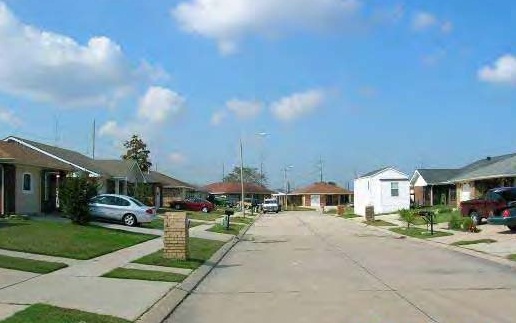
The 95-acre Agriculture Street Landfill Superfund site is in New Orleans, Louisiana. A municipal landfill operated on site from 1909 to 1957. From the 1970s through the late 1980s, the area was developed into a vibrant African American community that included single-family homes, multi-family units, retail stores, an elementary school, a community center and a recreation center. However, there were numerous concerns that this community was built on a former landfill and EPA added the site to the National Priorities List (NPL) in 1994. From 1997 to 2001, EPA conducted a series of removal actions to address lead contaminated soil. Hurricanes Katrina and Rita destroyed many residential structures on site, several of which were demolished in 2019. Much of the remainder of the site is now vacant or abandoned. In 2023, the city of New Orleans initiated a voluntary buyout of the Gordon Plaza neighborhood, which is located on the Site. In 2014, EPA’s Superfund Redevelopment Program (SRP) provided support to develop a reuse zones concept map and a redevelopment site profile to support redevelopment. A Microgrid Opportunities Report funded by the U.S. Department of Energy highlighted the site’s capacity to host a solar renewable energy project that could help power water and drainage infrastructure pumping stations across New Orleans. Following up on the finding, SRP provided more reuse support at the site in 2020, in partnership with EPA’s Re-Powering America’s Land Initiative, to develop a solar reuse suitability assessment and a National Renewable Energy Laboratory solar feasibility study for the site. In 2022, the site received a reuse assessment highlighting the potential installation of a solar farm. Once the city’s buyout is complete, they plan to proceed with developing solar and other municipal uses on the Site.
Last updated December 2023
As of December 2023, EPA had data on 7 on-site businesses. These businesses employed 8 people and generated an estimated $290,610 in annual sales revenue. For additional information click here.
For more information:
- Reuse Assessment: Agriculture Street Landfill Superfund Site (July 2022) (PDF)
- Solar Reuse Assessment and Feasibility Study Report - Agriculture Street Landfill Site (PDF)
- Agriculture Street Landfill Site Reuse Assessment (2014) (PDF)
- Superfund Site Profile Page
Bayou Bonfouca
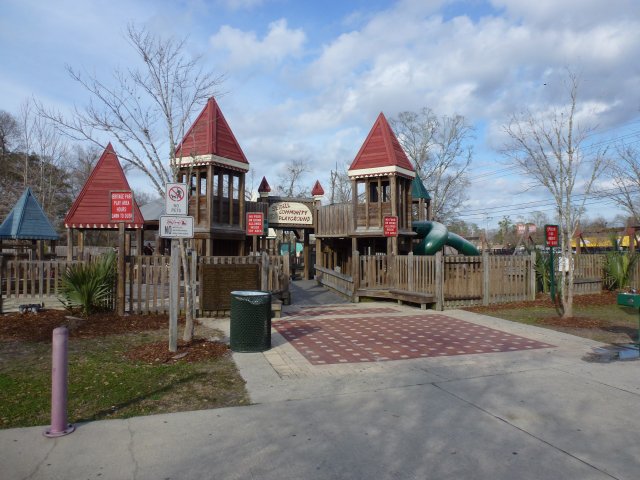
The 54-acre Bayou Bonfouca Superfund site is in Slidell, Louisiana. A commercial wood-treating plant operated on site for more than 100 years. A fire destroyed the plant in the early 1970s and released large volumes of creosote into the bayou. Years of unregulated waste disposal practices released contaminants into the soil, bayou and surrounding area. In 1976, the U.S. Coast Guard began an evaluation of Bayou Bonfouca. It collected samples and investigated pollution reports by residents. EPA added the site to the National Priorities List (NPL) in 1983. Cleanup included removing and consolidating contaminated soils, dredging Bayou Bonfouca’s contaminated sediments, incinerating contaminated soils and sediments on site, and pumping and treating contaminated groundwater. Operation and maintenance activities are ongoing. The Louisiana Department of Environmental Quality (LDEQ) runs the site’s groundwater pump-and-treat system. LDEQ also does routine groundwater monitoring. Cleanup efforts included restoration of over a mile of the bayou for aquatic life conservation and recreational reuse. During cleanup, EPA put in a boat ramp to access the bayou. Later, site owners donated the waterfront property to the city of Slidell (the City). The boat ramp is now available for public use and provides boat access to the bayou. The City coordinated with EPA and LDEQ to develop Heritage Park on site. The park includes playgrounds, green space, picnic areas, walking/jogging paths, restrooms and a gazebo for performances and community gatherings. In 2012, the City received a $1.5 million grant to promote boating access along Bayou Bonfouca near the site. Coordination among the City, LDEQ and EPA paved the way for the Slidell Municipal Marina. The marina opened in 2018. It includes floating docks, piers, trails and other amenities to encourage recreational boating on the bayou. It also provides boaters with access to Heritage Park and downtown Slidell from Lake Pontchartrain. In May 2018, EPA Region 6 recognized the community’s efforts to support beneficial reuse with its Excellence in Site Reuse award. The Slidell Public Works Department also uses part of the site for maintenance and vehicle storage.
Last updated December 2023
As of December 2023, EPA had data on 4 on-site businesses. These businesses employed 108 people and generated an estimated $4,650,445 in annual sales revenue. For additional information click here.
For more information:
- Bayou Bonfouca Superfund Site - Before and After
- Site Redevelopment Profile: Bayou Bonfouca Superfund Site (PDF)
- EPA Region 6 Excellence in Site Reuse Award
- Superfund Site Profile Page
Bayou Verdine
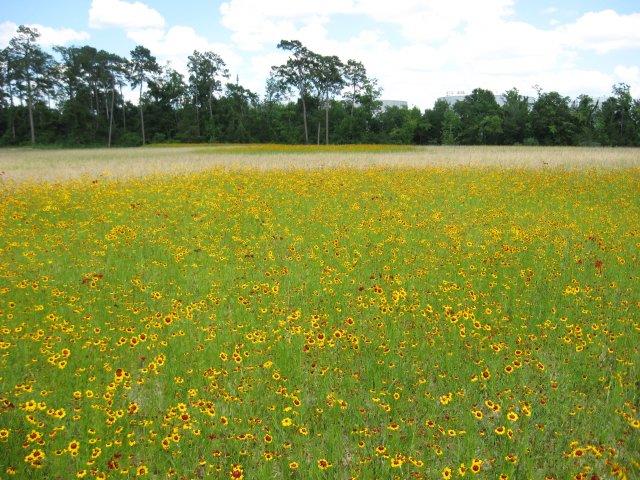
The Bayou Verdine site is in Calcasieu Estuary in Westlake, Louisiana. Surrounding areas support commercial and heavy industrial uses, with some natural riparian areas. Over time, contaminants from heavy industry, refinery operations and stormwater runoff built up in the sediments and surface water in Bayou Verdine. In 1999, EPA began studying the estuary. It found high levels of metals and hazardous chemicals. In 2010, EPA and two responsible parties, Phillips 66 and Sasol North America (Sasol), signed an agreement for the cleanup of a 2-mile stretch of Bayou Verdine. Cleanup work began in 2012. The parties removed contaminated sediments from the bayou, placed them in a containment cell on refinery property, and capped the containment cell. Phillips 66 also reinforced parts of the bayou shoreline, which runs through the Phillips 66 refinery property, to prevent future erosion. To improve the ecological function of the area, EPA and the parties worked together on ecological restoration and enhancements. Sediments were removed from a pond west of the containment cell, creating an open-water riparian habitat. The parties connected the pond to the wetland environment of Bayou Verdine through a drainage bioswale designed to reduce erosion and provide more habitat for wildlife and fish. The parties also seeded the containment cell cap with native wildflowers to create a pollinator habitat. Inspections ensuring that the remedy is functioning as intended and groundwater monitoring are ongoing. In October 2015, EPA Region 6 presented its Greenovations Award to Phillips 66, Sasol and other stakeholders for their work at the site. In addition, the site’s project manager won a 2016 EPA National Notable Achievement Award for the innovation and sustainability of the cleanup and reuse. The Phillips 66 company nominated the reuse project internally for a Phillips 66 Golden Shield award for its outstanding support of the company’s strategy, vision and values. (This was not for Bayou Verdine, it was for Bayou d’Inde, another part of Calcasieu Estuary with different PRPs.
Last updated December 2023
As of December 2023, EPA did not have economic data related to on-site businesses, or economic data were not applicable due to site use. For additional information click here.
For more information:
- Recreational and Ecological Use at Superfund Sites Story Map
- Ecological Revitalization on the Bayou: Bayou Verdine in Calcasieu Parish, Louisiana (PDF)
- EPA Region 6 Excellence in Site Reuse Award
- Superfund Site Profile Page
Central Wood Preserving Co.
The 17-acre Central Wood Preserving Co. Superfund site is in East Feliciana Parish, Louisiana. From the 1950s to 1973, the Central Creosoting Company ran a wood-treating facility at the site. In 1973, the facility changed ownership. At that time, the use of creosote ended. A solution of copper oxide, chromic acid and arsenic acid (CCA) replaced it. In 1991, the company filed for bankruptcy and closed the facility. Wood-treating products contaminated site soils, sediments and groundwater. Initial cleanup actions included removing buildings, tanks and contaminated soils near the main facility and fencing the area. EPA added the site to the National Priorities List (NPL) in 1999. Other cleanup work included treating contaminated soils, backfilling excavated areas with clean soil, replanting these areas and monitoring groundwater. Institutional controls address the potential wastes remaining in subsurface soils. After cleanup, EPA took the site off the NPL in 2009. Operation and maintenance activities are ongoing. EPA worked with the community to include future use considerations in cleanup and restoration planning. The East Feliciana Parish’s reuse plan included site grading and planting of loblolly pine seedlings, cherrybark oak trees and grasses. The East Feliciana Parish uses the site as a staging area for hurricane and storm-related debris.
Last updated December 2023
As of December 2023, EPA did not have economic data related to on-site businesses, or economic data were not applicable due to site use. For additional information click here.
For more information:
Delatte Metals
The 57-acre Delatte Metals Superfund site is in Tangipahoa Parish, near Ponchatoula, Louisiana. In the 1960s, two battery recycling and smelting operations were on site. Facility operations and waste disposal practices contaminated soil, sediment, surface water and groundwater. EPA added the site to the National Priorities List (NPL) in 1999. EPA’s cleanup activities included excavation, solidification and disposal of contaminated soil, and decontamination and disposal of site buildings and concrete slabs. Cleanup also included a permeable reactive barrier to neutralize the acidity of groundwater and monitoring. Institutional controls limit land and groundwater use. EPA took the site off the NPL in 2005. Today, a recycling shop and a boat and diesel service shop are on site.
Last updated December 2023
As of December 2023, EPA had data on 2 on-site businesses. These businesses employed 9 people and generated an estimated $5,058,360 in annual sales revenue. For additional information click here.
For more information:
Devil's Swamp Lake
The Devil’s Swamp Lake site is in East Baton Rouge Parish, about 10 miles north of Baton Rouge, Louisiana. A waste disposal facility was on site from the early 1970s to 1997. Materials discharged from the facility contaminated surface water, soil, sediment, plants and animals in Devil’s Swamp Lake. EPA proposed adding the site to the National Priorities List (NPL) in 2004, but never finalized it. Cleanup includes capping a drainage ditch and enhanced monitoring of natural recovery in certain areas of the lake with high concentrations of sediment contamination. Advisories in place caution the public not to eat fish or crawfish from the area or to swim or participate in other primary water contact sports in the area of concern. Continued ecological uses on site include wetlands and Devil’s Swamp Lake, a small lake created after construction of Baton Rouge harbor in 1973. Currently, the State of Louisiana has a fishing advisory in place. The EPA does not have authority to restrict fishing, boating, or hunting.
Last updated December 2023
As of December 2023, EPA did not have economic data related to on-site businesses, or economic data were not applicable due to site use. For additional information click here.
For more information:
Gulf Coast Vacuum Services
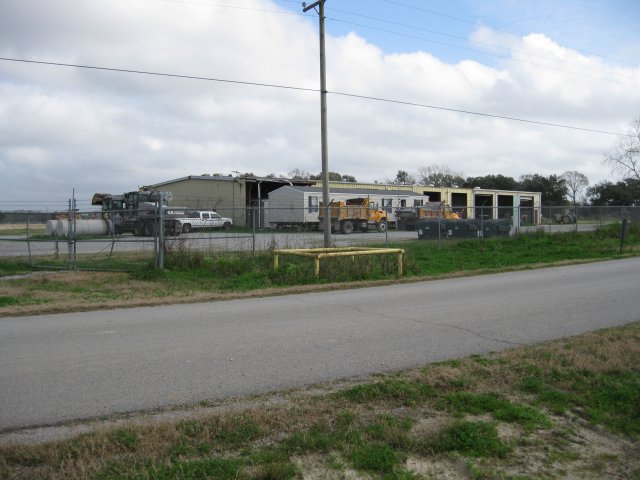
The 12.8-acre Gulf Coast Vacuum Services Superfund site is near Abbeville in Vermilion Parish, Louisiana. From 1969 to 1984, Gulf Coast Vacuum Services GCVS and its predecessors conducted industrial activities and used the site as a vacuum truck and oilfield drilling mud facility. Operators rinsed vacuum trucks in onsite pits, stored raw waste materials in tanks, and disposed of contaminated materials on site without a permit. These disposal practices contaminated area soil, sediment and groundwater with metals and organic contaminants. EPA added the site to the National Priorities List (NPL) in 1989. Cleanup included treatment of pit sludge, soils and tank contents, stabilization and on-site disposal of treated residuals and soils, capping of disposal areas with a 2-foot clay cover, implementation of institutional controls that restrict use, and ongoing groundwater monitoring. In September 1999, site owners and the Vermilion Parish Police Jury (VPPJ) entered into a site use and access agreement. VPPJ uses part of the site for vehicle maintenance activities. As part of the agreement, VPPJ maintains the access roads and gates. EPA deleted the site from the NPL in 2001.
Last updated December 2023
As of December 2023, EPA had data on one on-site business. This business employed 10 people. For additional information click here.
For more information:
Gulf State Utilities-North Ryan Street
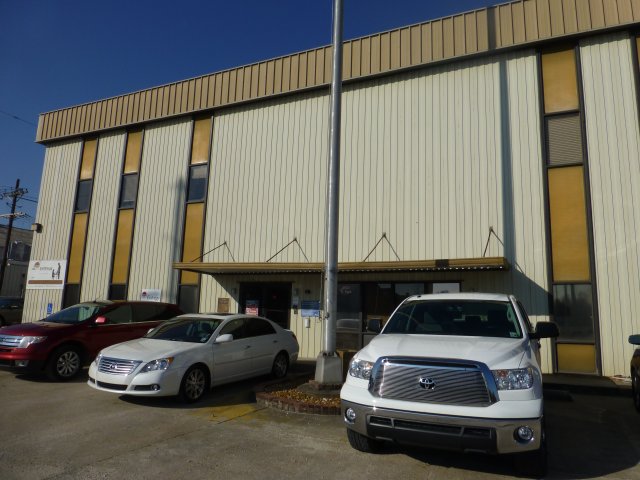
The 20-acre Gulf State Utilities-North Ryan Street Superfund site is on the Calcasieu River in Lake Charles, Louisiana. From 1916 to 1932, a manufactured gas plant on site. Operators discharged coal tar byproducts into wetlands around the site. In 1988, utility workers digging a trench found oily material seeping from the ground. Improper waste disposal contaminated soil, sediment and groundwater with hazardous chemicals. EPA proposed adding the site to the National Priorities List (NPL) in 1995 but did not finalize the listing. Cleanup included removal of contaminated soil and sediment, dewatering, and on-site consolidation and capping of contamination. After river dredging, the potentially responsible party covered part of the southern bank of the Calcasieu River with a mat of concrete blocks to stabilize the shoreline and protect the restored area. The remedy also included land and groundwater use restrictions. Long-term groundwater monitoring is ongoing. The remedy allows for continued use of the site for industrial and commercial purposes. An electrical power production company and a metal welding and fabrication business are on site.
Last updated December 2023
As of December 2023, EPA had data on 2 on-site businesses. These businesses employed 12 people and generated an estimated $1,658,810 in annual sales revenue. For additional information click here.
For more information:
Highway 71/72 Refinery
The 215-acre Highway 71/72 Refinery site is in Bossier City, Louisiana. From the 1920s to late 1940s, the Louisiana Oil Refining Corporation ran a refinery that produced home heating and fuel oil on site. By the mid-1950s, property owners had dismantled, removed and sold most of the refinery equipment. In 1964, the Louisiana Department of Highways acquired two tracts of the site property and put in a right of way for Interstate 20. In November 1966, property owner Cities Service Company (CSC) announced plans to demolish remaining refinery structures and clean up the property. CSC, and later OXY USA (OXY), which had leased tanks and bulk storage at the site in the 1950s, did more environmental investigations in 1985. EPA proposed adding the site to the National Priorities List (NPL) in February 1995 but did not finalize the site’s listing. The site’s potentially responsible party (PRP) addressed the site using the Superfund Alternative Approach. This approach requires the same investigations, cleanup process and standards required for sites on the NPL. With EPA oversight, the PRP led two removal actions to address surface soil contamination and indoor air contamination. EPA selected the final remedy in September 2000. Cleanup included soil and groundwater remediation, indoor air sampling, and mitigation of indoor air contamination. Groundwater monitoring is ongoing. Institutional controls restrict groundwater use. All residents get their drinking water from the city’s public water supply. The cleanup protects human health and the environment while enabling people to remain in their homes and businesses to remain open. It is also compatible with new development. Today, site uses include single-family homes, apartment buildings, commercial buildings, restaurants, a hotel complex, public parks and churches. An operating pipeline and a highway cross the site. Construction of a retail business on site is planned for completion in mid-2024.
Last updated December 2023
As of December 2023, EPA had data on 31 on-site businesses. These businesses employed 396 people and generated an estimated $21,859,120 in annual sales revenue. For additional information click here.
For more information:
Madisonville Creosote Works
The 29-acre Madisonville Creosote Works Superfund site is in St. Tammany Parish, Louisiana. The Madisonville Creosote Works wood-treating facility was on site from the 1950s to 1994. Facility operations contaminated soil and groundwater. Runoff from the site also contaminated surface water and sediment in the North Stream and South Stream. EPA added the site to the National Priorities List (NPL) in 1986. Cleanup included excavation and off-site disposal of contaminated media and thermal treatment of site soils. A wastewater treatment plant building treated recovered fluids and a trench system addressed recovered dense non-aqueous phase liquid (DNAPL). Cleanup finished in 2000. Operation and maintenance activities are ongoing. A state air monitoring station is on site.
Last updated December 2023
As of December 2023, EPA did not have economic data related to on-site businesses, or economic data were not applicable due to site use. For additional information click here.
For more information:
Mallard Bay Landing Bulk Plant
The 10-acre Mallard Bay Landing Bulk Plant Superfund site is in Cameron Parish, northeast of Grand Chenier, Louisiana. It includes two 5-acre areas separated by Talen’s Marine, a marina and dock. From early 1980 to 1983, a crude oil refinery, the Mallard Bay Landing Bulk Plant, was on site. In 1987, the owners filed for bankruptcy and the facility closed. In 1993, an inspection found oily liquids and sludges in tanks and other environmental concerns. Initial cleanup activities included the removal and off-site disposal of oil and waste material from on-site tanks, air monitoring, and surface water treatment and discharge. EPA added the site to the National Priorities List (NPL) in 2000. In 2003 and 2004, EPA removed all remaining tank sludges, contaminated soil and structures. After cleanup, EPA took the site off the NPL in 2005. Today, a nearby marine company uses the site as a staging and storage area for oil products.
Last updated December 2023
As of December 2023, EPA had data on one on-site business. EPA did not have further economic details related to this business. For additional information click here.
For more information:
Petro-Processors Of Louisiana, Inc.
The 77-acre Petro-Processors of Louisiana, Inc. Superfund site is in East Baton Rouge Parish, Louisiana. Petro-Processors of Louisiana, Inc. (PPI) disposed of petrochemical wastes at the site in the 1960s and the 1970s. The site includes disposal areas, a borrow pit for the construction of a highway overpass and parts of Bayou Baton Rouge. PPI’s operations contaminated surface soil, surface water, groundwater, air and airborne particulate matter with hazardous chemicals. EPA added the site to the National Priorities List (NPL) in 1984. Federal, state and potentially responsible party actions are addressing the site. Cleanup includes source control and reduction, natural recovery of sediments, monitored natural attenuation of contaminated groundwater and administrative controls. Former disposal areas have been backfilled, capped, graded and seeded. Groundwater monitoring and operation and maintenance activities are ongoing. A hazardous waste management service is active on site. The site’s ecological resources include a pond and a stream.
Last updated December 2023
As of December 2023, EPA did not have economic data related to on-site businesses, or economic data were not applicable due to site use. For additional information click here.
For more information:
Southern Shipbuilding
The 56-acre Southern Shipbuilding Superfund site lies along Bayou Bonfouca in Slidell, Louisiana. A shipping facility opened on site in 1919. It changed ownership several times over the years. Operations included cargo-bearing barge support and cleaning services and ship construction and repair. They also included shipbuilding for the U.S. Navy during World War II. Facility operations contaminated soil, surface water and sediment. EPA added the site to the National Priorities List (NPL) in 1986. Short-term cleanup actions stabilized levees, treated discharged waters and removed 2,000 containers. In 1992, investigations found that levees at the site had failed, releasing sludge into Bayou Bonfouca. In 1993, the Southern Shipbuilding Corporation filed for bankruptcy and ceased operations. Long-term cleanup included digging up, incineration and capping of contaminated soil, capping of sediment, monitored natural attenuation of groundwater, and institutional controls. After cleanup, EPA took the site off the NPL in 1998. Annual inspections and operation and maintenance activities are ongoing. Today, a private equity firm owns the site property. Site uses include a shipyard and an industrial park. Continued ecological use at the site includes the bayou.
Last updated December 2023
As of December 2023, EPA had data on one on-site business. This business employed one person. For additional information click here.
For more information:
